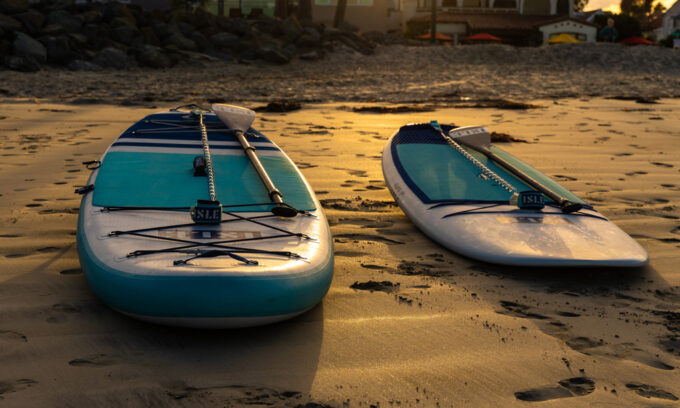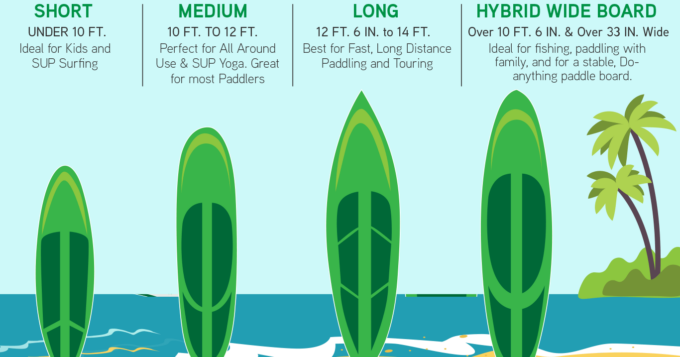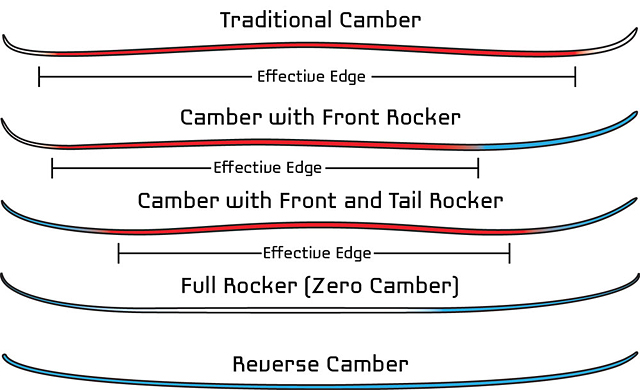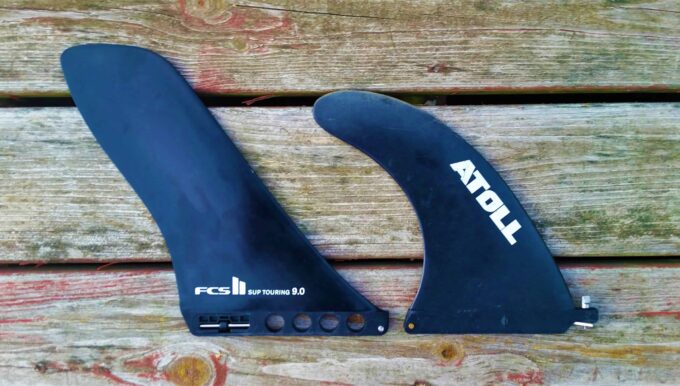Stand-up paddleboarding is taking the country by storm, with more people trying out the sport every day. Whether you’ve just discovered the benefits of stand-up paddleboarding or you’ve been dabbling in it for years, you may be in the market for your first stand-up paddleboard. If you’re ready to purchase your own stand-up paddleboard (SUP), these tips, combined with the SUP reviews on iSUPReviews.com, should help you learn what you need to know before you go shopping.
Inflatable Vs. Solid SUPs

Source: islesurfandsup.com
The most important choice you’ll need to make before you buy your first SUP is whether you’re going to get an inflatable SUP or a solid SUP. There are pros and cons to both types, so it really comes down to your preference and lifestyle. Inflatable SUPs are ideal for people who don’t have a lot of space to store a SUP. The reason for this is fairly obvious: they can be deflated, rolled up in a compact bundle, and stored in a small pack. They are great if you don’t have a large car that can carry a solid SUP or if you have to carry your SUP a significant distance before you get to the water.
Inflatable SUPs are lightweight, easy to carry, and durable. You can take them with you on an airplane or on a day hike. Plus, they come in every price range imaginable, so no matter what your budget for an SUP is, you’re sure to find a model that fits your needs. If you intend to use your SUP in a whitewater river, you’ll definitely want an inflatable one, which can better stand up to rocks and debris.
Solid SUPs, on the other hand, are better for beginners because they are steadier than inflatable SUPs. This is due to their more rigid construction, and even heavier riders will enjoy a stable ride. If you’re going to ride in the ocean, a solid SUP may be more beneficial because it will allow you to ride the waves without tipping over as easily as you might in an inflatable SUP. If your goal is to race paddleboards, a solid SUP is definitely the way to go.
SUP Board Length

Source: gilisports.com
As you start looking through SUP reviews and sifting through the numerous boards that are on the market, you’ll want to narrow your choices down by board length. The longer the SUP board is, the steadier it will be, so if you’re a beginner, a board that’s 12 feet long or longer is a good match. Racers may also choose a longer board because they tend to be built for speed.
A board that is between nine and 12 feet long is meant for general use. This is the length of board that works well on any water type, from lakes, to rivers, to oceans. If you’ve ever rented a SUP, it’s likely that it was between nine and 12 feet long because this size tends to fit nearly every rider. They are also great for activities like SUP yoga, fishing, or cruising.
Short SUP boards that are under nine feet in length should be reserved for experienced SUP riders and those who want to combine standup paddleboarding with surfing. They are fun to use in the ocean when there are waves, but because of their short stature, they are not as stable as the longer boards. Beginners should be prepared to fall off short SUPs more often until they gain experience.
SUP Board Shape

Source: sup.star-board.com
Unless you intend to race your SUP, you’ll probably only consider planning hull SUPs. This is the most versatile shape of SUP, which means that you’ll be able to use it in most water types and conditions. They are shaped like surfboards, making them stable and buoyant. Displacement hull SUPs are the other popular shape of SUP, but they are significantly less popular than planing hull SUPs. Displacement hull SUPs are shaped more like kayaks and canoes and are designed for slicing through the water. They are built for speed, but their narrowness makes them better for experienced paddlers.
Rocker Profile

Source: telemarktalk.com
Nearly all SUPs have a rocker profile, which means the tips of the SUP are higher than the middle. This curved profile gives the SUP more maneuverability in various types of water. You will see SUPs with more rocker than others, depending on the intended use for the SUP. For example, touring SUPs are not going to have much rocker at all because they don’t need to slice through the water as well as whitewater SUPs, which will feature more rocker to allow them to move through the rapids more easily.
Fins

Source: theseasonedsurfer.com
Fins add stability and tracking ability to SUPs, and while there are several fin configurations available, the most common set up is a single fin SUP. This configuration consists of one large fin placed in the middle of the SUP to increase the straight tracking ability of the board. These single-fin SUPs are ideal for flat water surfaces. Three-fin SUPs are the second most popular configuration and consist of a staggered fin pattern that increases maneuverability and stability in whitewater or wavy water conditions.
Most SUP fins are made of nylon or fiberglass and can be replaced if damaged. However, there are some nylon fins attached to inflatable boats that cannot be removed. Even though these rubber fins are durable, they are not meant for whitewater boarding because if they get damaged by rocks or debris, they cannot be replaced. Be sure to consider this factor before purchasing a SUP if you intend to take it down a river.
Conclusion
When it comes down to purchasing your first SUP, you’ll want to consider the type of water you intend to use it in, what you intend to use it for (cruising, touring, racing, surfing, etc.), and your preference for an inflatable or solid surface. If you aren’t sure what your preferences are, consider renting various types of SUPs until you find one you like. That way, you don’t invest a lot of money into a SUP that isn’t right for your needs. Then, when you’re ready to buy one, look at reviews to make sure you purchase a quality SUP at a good price.







